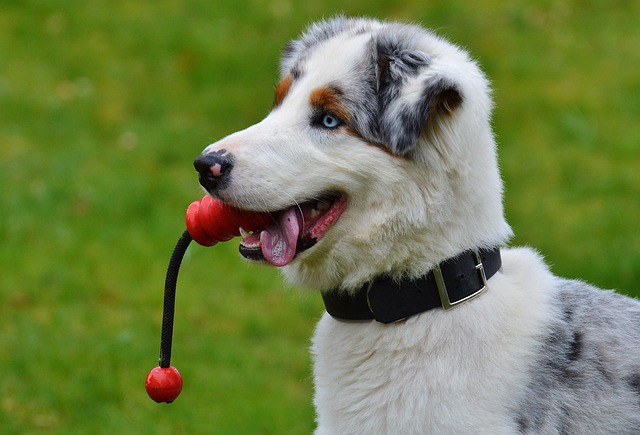
How to teach your dog to settle down and relax on cue?
Teaching your dog to settle down on command isn't just about quieting a rambunctious pup—it's a life skill that eases anxiety, aids socialization, and strengthens your bond.
Nothing’s scarier than seeing your dog bare its teeth at a child. Whether it’s a growl during playtime or a snarl when a little one gets too close, aggression is a serious issue. But here’s the good news: with patience, consistency, and a dash of know - how, you can transform those tense moments into tail - wagging memories. And as a responsible pet owner, understanding local laws and safety guidelines is just as crucial as the training itself.
First off, figure out what’s triggering the aggression. Is your dog protective of its toys or food? Does sudden movements from kids startle it? Dogs don’t lash out without reason—fear, territorial instincts, or past negative experiences can all play a part. In many regions, local animal control laws require pet owners to address aggressive behavior promptly. Ignoring it not only puts kids at risk but could land you in legal hot water too.
Start by creating positive associations between your dog and children. When a child visits, give your dog a delicious treat or its favorite toy. The goal is to make your dog think “kids = good things.” Keep initial interactions short and supervised, gradually increasing the time as your dog relaxes. Remember, it’s all about baby steps. In some communities, there are specific guidelines on how to manage interactions between pets and children in public spaces, so it’s smart to familiarize yourself with those too.
 Teach your dog basic obedience commands like “sit,” “stay,” and “leave it.” These commands act as a safety net during interactions with kids. If your dog gets too excited or shows signs of aggression, a firm “stay” can stop it in its tracks. Plus, many local dog training classes and certifications focus on these foundational skills, which can be helpful not just for behavior modification but also for meeting local pet - related regulations.
Teach your dog basic obedience commands like “sit,” “stay,” and “leave it.” These commands act as a safety net during interactions with kids. If your dog gets too excited or shows signs of aggression, a firm “stay” can stop it in its tracks. Plus, many local dog training classes and certifications focus on these foundational skills, which can be helpful not just for behavior modification but also for meeting local pet - related regulations.
Socialization is key. Expose your dog to different environments, sounds, and of course, kids of all ages and sizes. Take it to parks where children play, or arrange controlled playdates with friends’ kids. But always keep your dog on a leash and watch its body language closely. In certain areas, there are strict leash laws, especially when it comes to dogs with a history of aggression. Following these rules helps protect everyone involved.
If the aggression persists, don’t hesitate to call in the pros. A certified dog behaviorist or trainer can assess the situation and create a personalized training plan. Some regions even offer subsidized training programs for pet owners dealing with behavioral issues, as part of local animal welfare initiatives. In extreme cases, local laws may require you to keep your dog muzzled in public or take other precautions, so getting professional help early can prevent more serious consequences.
Training your dog to be kid - friendly isn’t just about avoiding bites—it’s about creating a harmonious environment where everyone feels safe. By combining consistent training, understanding of local regulations, and a whole lot of love, you can help your furry friend become the gentle companion you know it can be. After all, there’s nothing quite like seeing your dog happily romping around with kids, tail swishing and joy all around.

Teaching your dog to settle down on command isn't just about quieting a rambunctious pup—it's a life skill that eases anxiety, aids socialization, and strengthens your bond.

There’s nothing quite like the joy of strolling through the park with your dog—until they start lunging at every passing cyclist or barking at fellow walkers.

Teaching your dog to settle on a mat isn't just a cute party trick—it's a game-changer for daily life. Whether you're hosting guests, working from home, or dining at a café, a dog that can calmly relax on their mat brings peace to any situation.

Walking your dog should be a relaxing bonding experience, not a tug-of-war nightmare. But getting your pup to behave outside takes patience, consistency, and understanding of both canine instincts and local norms.

Absolutely – but harnesses aren’t magic. Picture your enthusiastic Labrador straining toward a squirrel while his collar digs into his throat.

That distressing gagging sound when your 12-week-old Labrador lunges toward a squirrel isn't just unsettling – it risks permanent trachea damage.